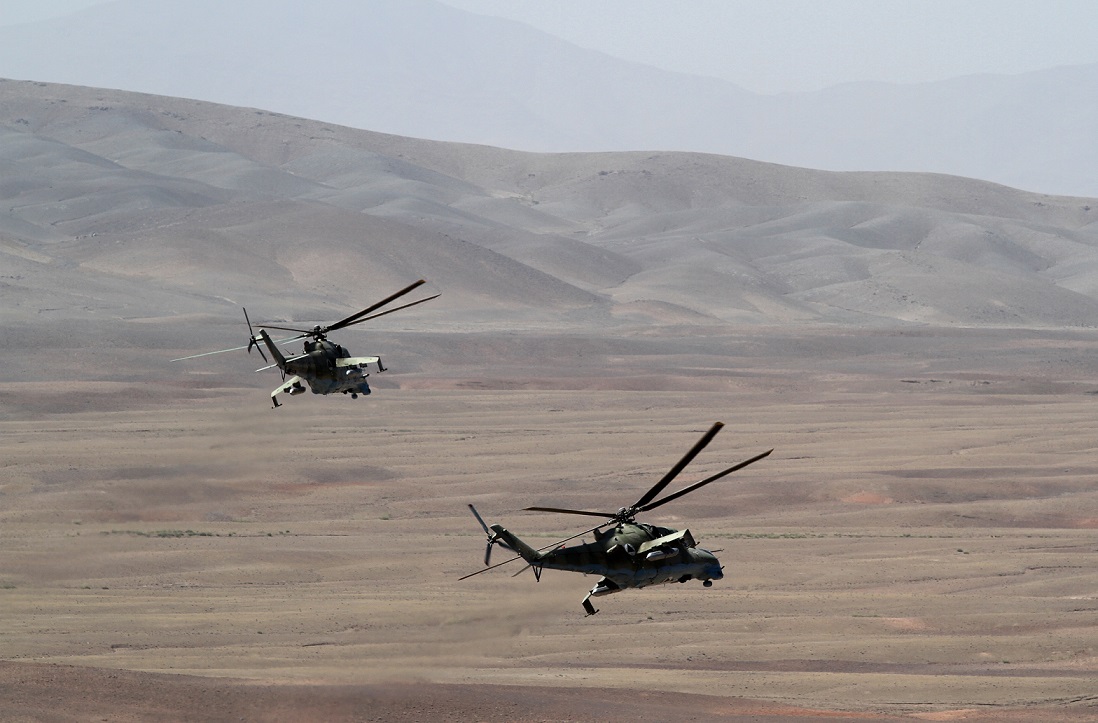This post is also available in:
 עברית (Hebrew)
עברית (Hebrew)
The airspace above future battlefields is expected to be increasingly congested with large numbers of unmanned aerial systems, manned aircraft, munitions and missiles filling the skies. New technologies are required to de-conflict airspace activities of friendly forces and rapidly counter enemy actions.
DARPA announced its Air Space Total Awareness for Rapid Tactical Execution (ASTARTE) program, which is being conducted in partnership with the US Army and US Air Force. The program seeks to provide real-time, low-risk joint de-confliction between airspace users and joint fires at an Army Division-level to enable responsive support to tactical units and build a resilient air picture.
This capability is especially critical for implementing DARPA’s Mosaic Warfare concept, which calls for seamless co-ordination across a complex web of aerial, ground and sea nodes providing firepower and other effects to overwhelm an adversary, according to darpa.mil.
Paul Zablocky, program manager in DARPA’s Strategic Technology Office, said, “ASTARTE aims to provide a real-time, common operational picture of the dynamic airspace in the most complex and challenging adversary anti-access/area denial, or A2/AD, environments.”
ASTARTE will focus on the most challenging airspace problem – the airspace above an Army Division operating under an enemy’s A2/AD bubble. This volume of airspace can contain Army, Air Force, Navy, Marine Corps, Special Operations Forces, coalition and adversary manned/unmanned aircraft, and munitions.
“We want to provide a more accurate and timely picture of the airspace that will allow for long-range fire missions as well as manned and unmanned aircraft operations to occur simultaneously and more safely in the same airspace,” Zablocky added.
The program will not only provide a continuously updating, real-time, four-dimensional (space and time) moving picture of the battlespace for friendly forces but will also use its sensor network to detect and map adversary locations, increasing situational awareness within A2/AD environments.
The program will aim to “complement” Joint All Domain Command and Control (JADC2), the military’s future network-of-networks botnet being developed by the Air Force.
The new ASTARTE “engine” or “brain” will be designed for compatibility with existing and future command and control systems (C2) used by the military services, and will automatically push the most current and relevant airspace information to all joint units on their native C2 systems.
To achieve its objectives, ASTARTE is focused on three technical areas.
- Developing algorithms for understanding and decision making that can predict airspace usage conflicts, propose de-confliction solutions with associated risk levels, and direct sensors in the ASTARTE network to maintain the necessary airspace picture at a given moment in time. These algorithms would be usable from any C2 system.
- Performers will be asked to develop or leverage existing low-cost sensors to detect and track, in real-time, manned and unmanned aircraft, airborne weapons, and other potential flight safety hazards, such as unmanned balloons, in an A2/AD setting.
- Development of a virtual laboratory testbed for modeling, simulation, and virtual experimentation using a combination of current C2 systems and ASTARTE technology.


























